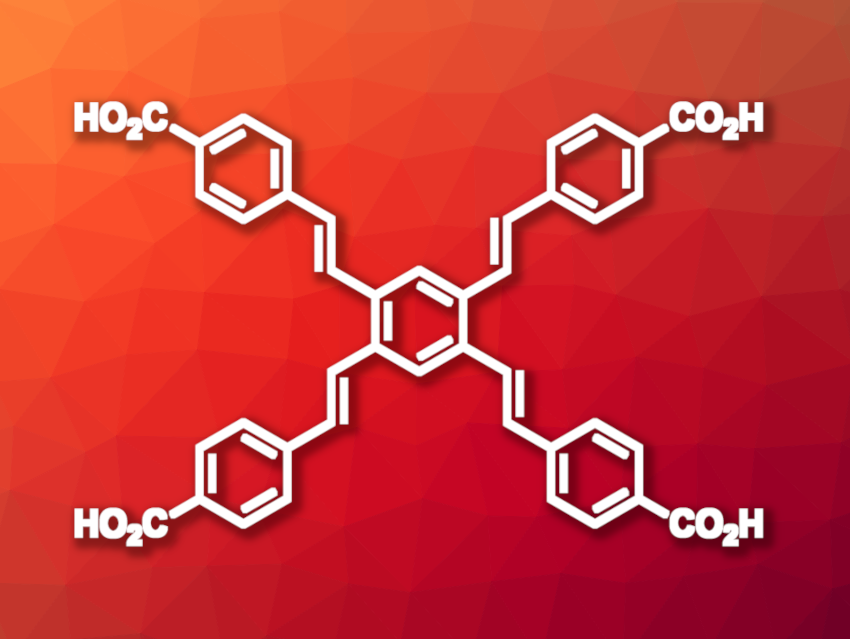Natural gas, which consists mostly of methane, is a useful fuel, but also a source of methane as a chemical building block. To use the methane for this purpose, it has to be separated from the higher hydrocarbons that are also found in natural gas. C2 hydrocarbons are most common, and they can also be useful in the chemical industry, e.g., for polymer production. Metal–organic frameworks (MOFs) are porous materials with potential applications in hydrocarbon separation.
Shengqian Ma, Mohammad A. Omary, University of North Texas, Denton, USA, and colleagues have developed a copper-based MOF using a new organic linker, H4L (pictured, H4L = 4,4′,4”,4”’-((1E,1′E,1”E,1”’E)-benzene-1,2,4,5-tetrayltetrakis(ethene-2,1-diyl))tetrabenzoic acid), for use in C2 hydrocarbon/CH4 separation. The MOF, called UNT-14, was prepared from the linker and Cu(NO3)2·2.5H2O in a mixed solvent system of N,N-diethylformamide (DEF) and water. The team obtained the MOF in the form Cu2L(DEF)2]·2DEF.
The product was characterized using single-crystal X-ray analysis and the team found that the framework contains dinuclear Cu2(COO)4 units that are connected by the linkers to form a two-dimensional structure with rhombic pores. Once activated, the MOF showed a higher uptake of C2 hydrocarbons than methane at room temperature. The researchers propose that it could be a promising material for the selective separation of C2Hn and CH4 under ambient conditions.
- A Copper-Based Metal–Organic Framework for Selective Separation of C2 Hydrocarbons from Methane at Ambient Conditions: Experiment and Simulation,
Sheikh M. S. Islam, Rashida Yasmeen, Gaurav Verma, Sammer M. Tekarli, Vladimir N. Nesterov, Shengqian Ma, Mohammad A. Omary,
Inorg. Chem. 2024.
https://doi.org/10.1021/acs.inorgchem.4c00188




